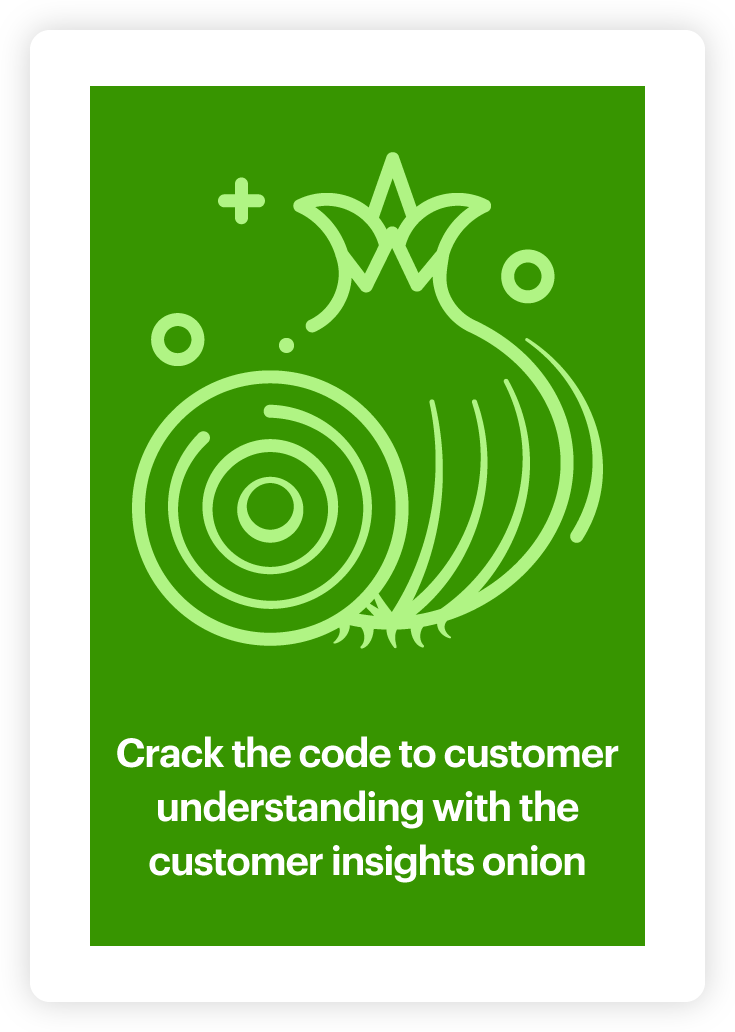How UK banks are using Twitter as a support channel
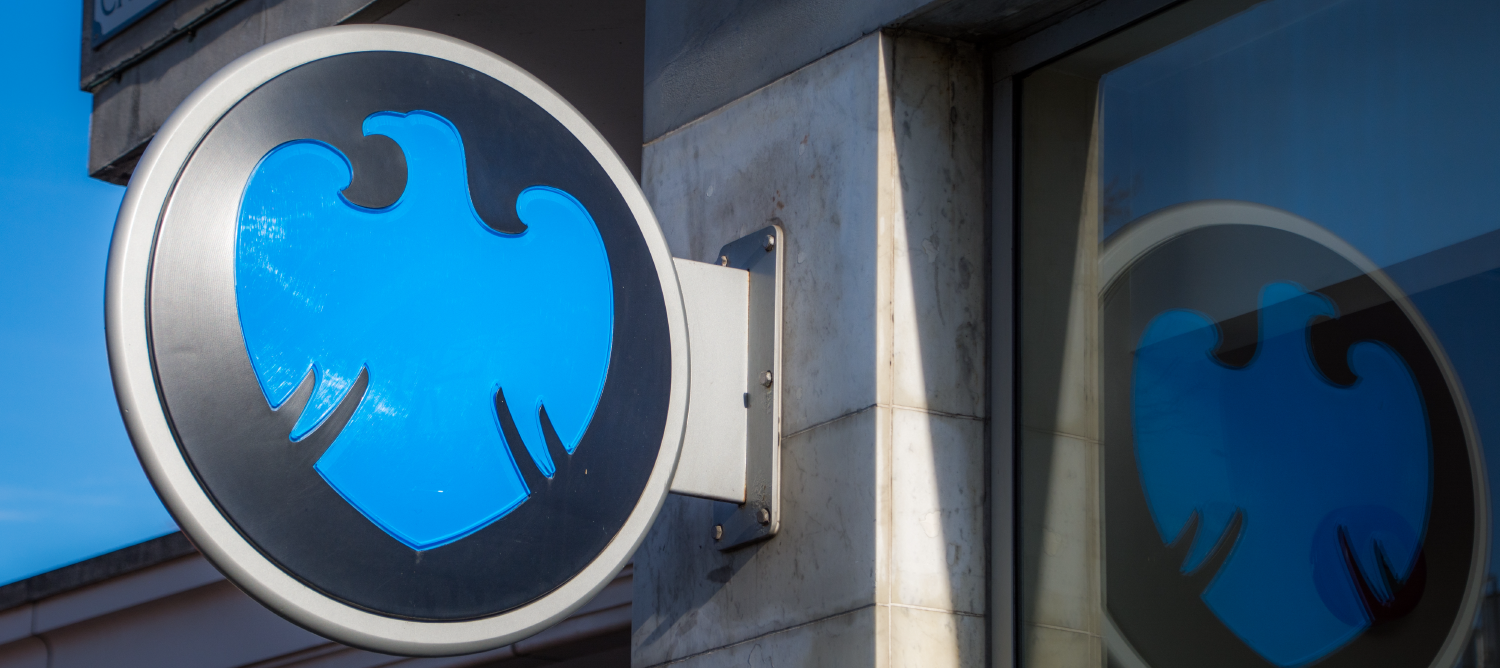
Lost bank card. Unexplained overdraft fees. Fraudulent activity. These are just some of the reasons why we rely on the customer service of commercial banks in day-to-day life.
However, with long phone queues and AI chatbots that ‘do not compute’, interacting with the bank is not always a positive experience. Twitter is changing how businesses provide customer service, with some commercial banks now operating Twitter channels dedicated to helping customers and resolving their frustrations.
But how do the customer service interactions for three major banks measure up? To find out, we used the Relative Insight text analysis platform to look at the Twitter support channels of Barclays, Santander and NatWest. By analysing social activity from these accounts, we identified key differences in how each institution uses Twitter to communicate with their customers and extracted valuable customer insights examples.
Barclays
Empathetic and mindful
Barclays’ Twitter support channel showcases the genuine empathy of their agents as they consistently acknowledge the customer’s emotions. Instead of saying “I understand you’re annoyed” to every single customer, their response flickers between “I appreciate you’re upset” and “I understand how frustrating this may be”. Compared to their competitors, Barclays is 31.4x more likely to reassure customers, asking them not to worry.
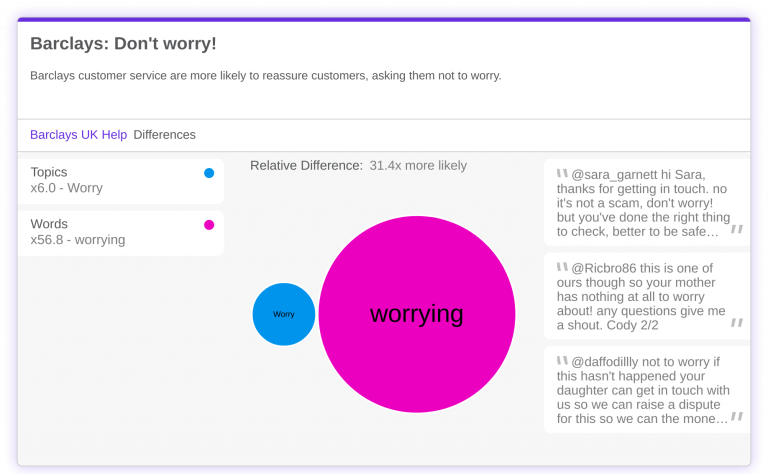

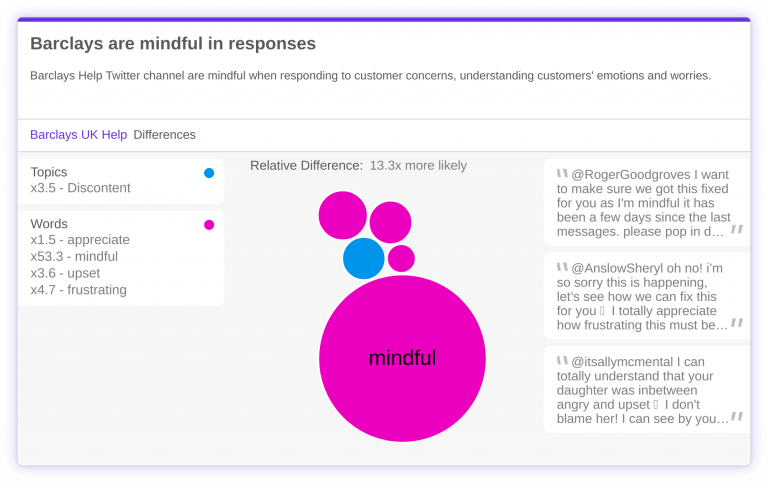

Positive, friendly and informal
In comparison to NatWest and Santander, Barclays is 6.8x more likely to use positive language as they work to address customer issues. Words such as love, pleased and happily help put the customer at ease and highlight a willingness to assist. Agents also ask customers to pop into their DMs; a convenient option to further discuss the matter at hand privately.
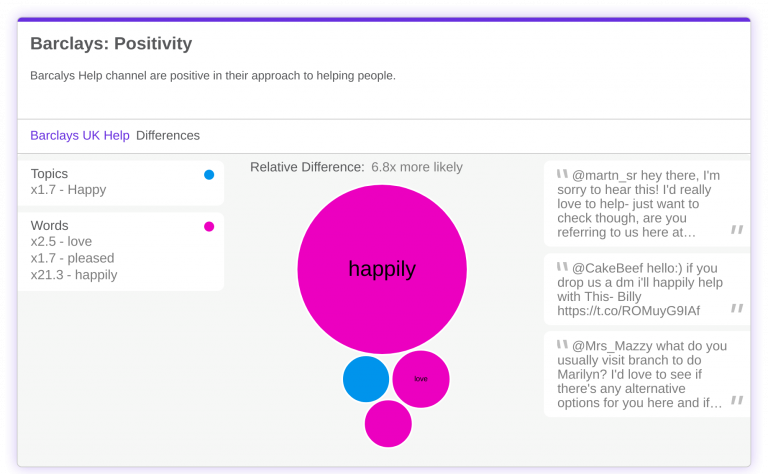

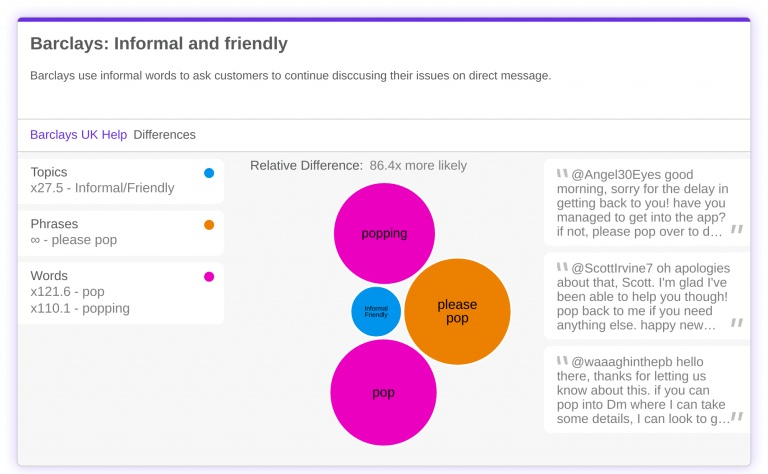

Follow up with customers
Unlike their competitors, Barclays is 11.2x more likely to follow up with customers on their Twitter support channels by asking whether they managed to get their issue sorted. Agents exhibit a clear willingness to provide further support when the answer is no.
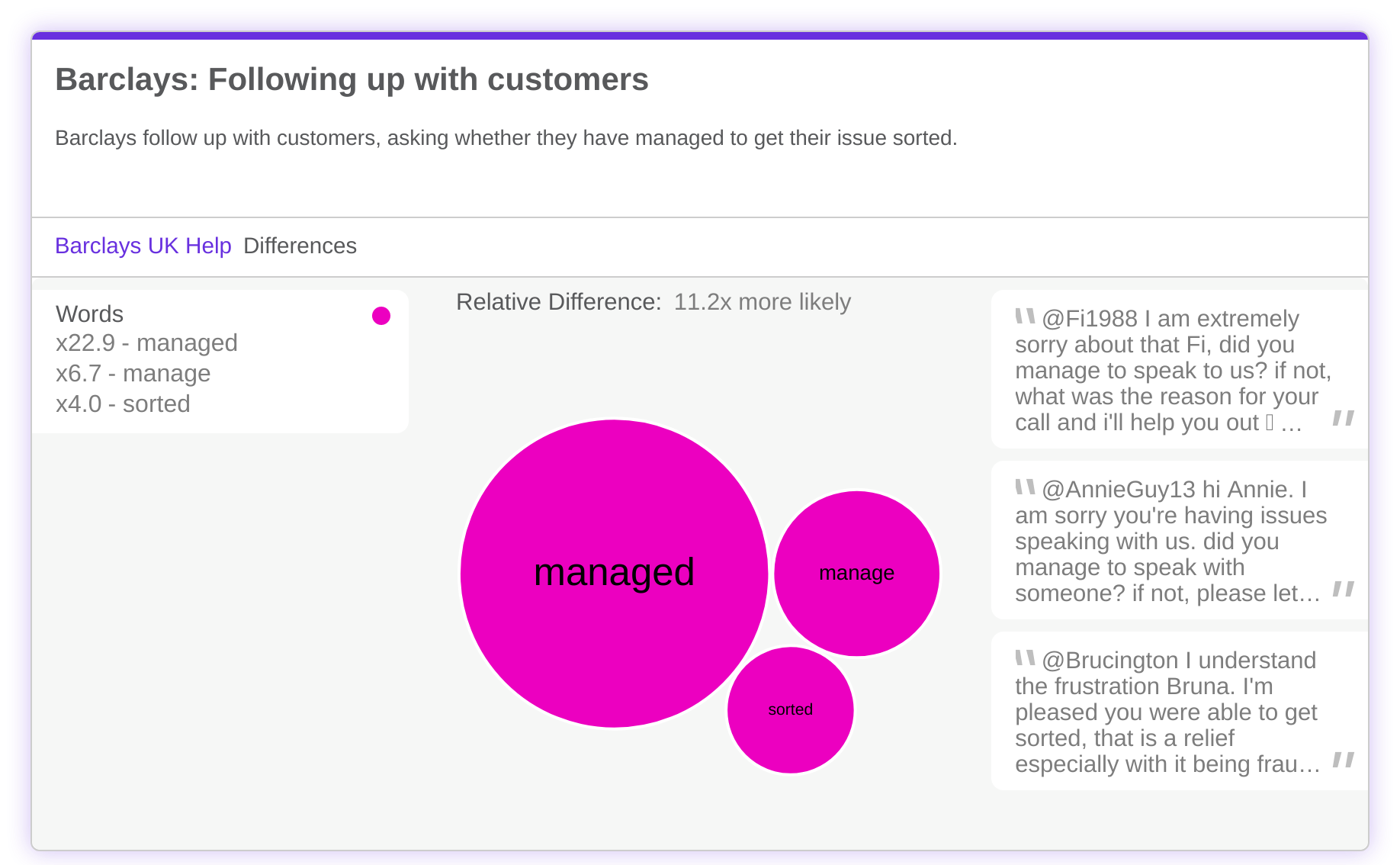

The human touch
What differentiates a good customer experience from a great one often lies in the minutiae of language. Customer service feels impersonal when generic messages are copied and pasted. However, what sets Barclays apart is personalised responses. Use of personal pronouns such as I’ll, I’d, me and I’m appear 12.3x more in this data set. Barclays employees even engage in human conversations about weather and the hold music!
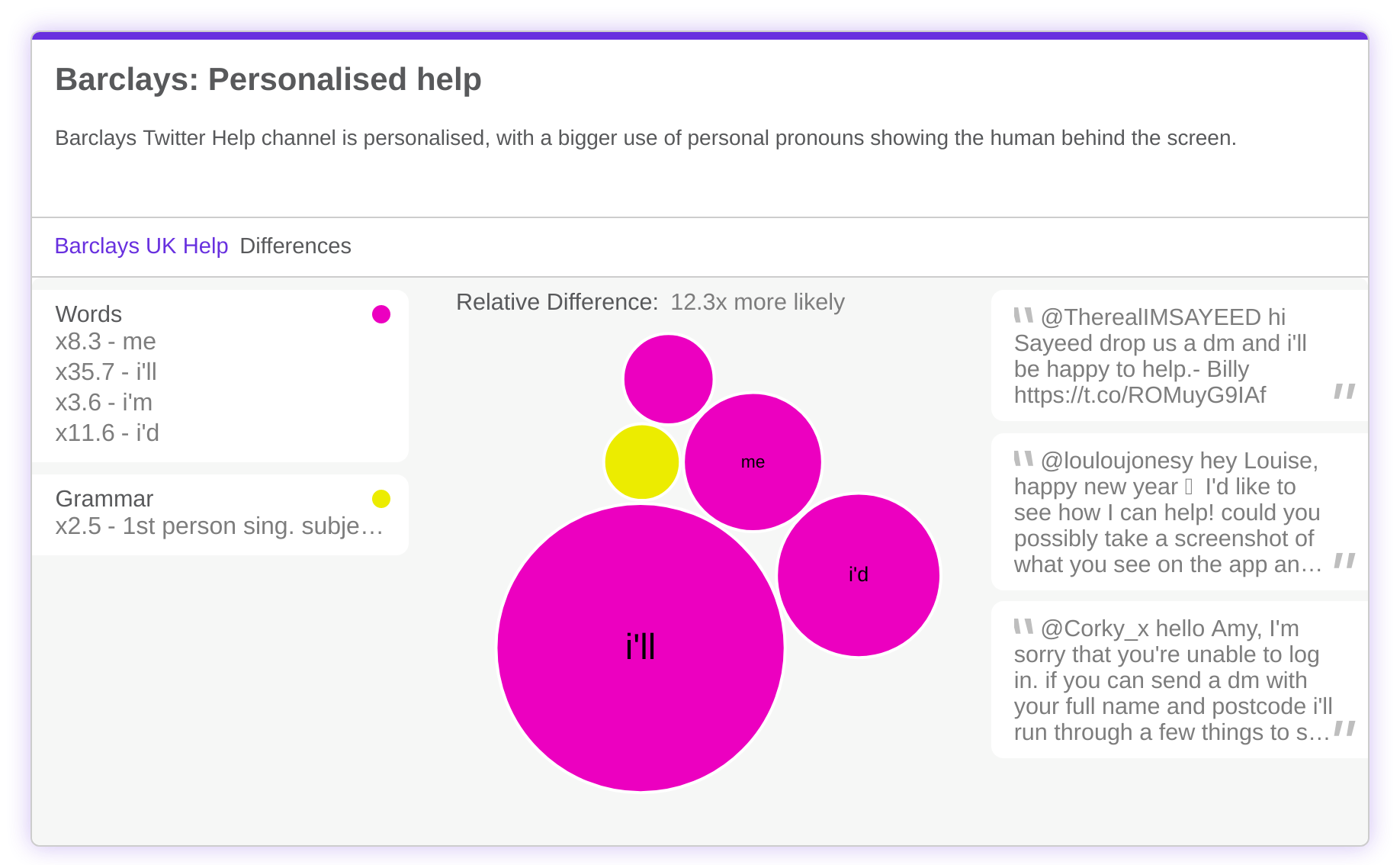

Santander
Recommendations
As customer support platform Helpdesk points out, “when replying to a customer, you’re juggling three responsibilities: answering their question, replying in a timely manner, and teasing out the root cause.” Santander answer customer queries on Twitter with recommendations for issues that are easily fixed, using words such as recommend and phrases like have you tried?
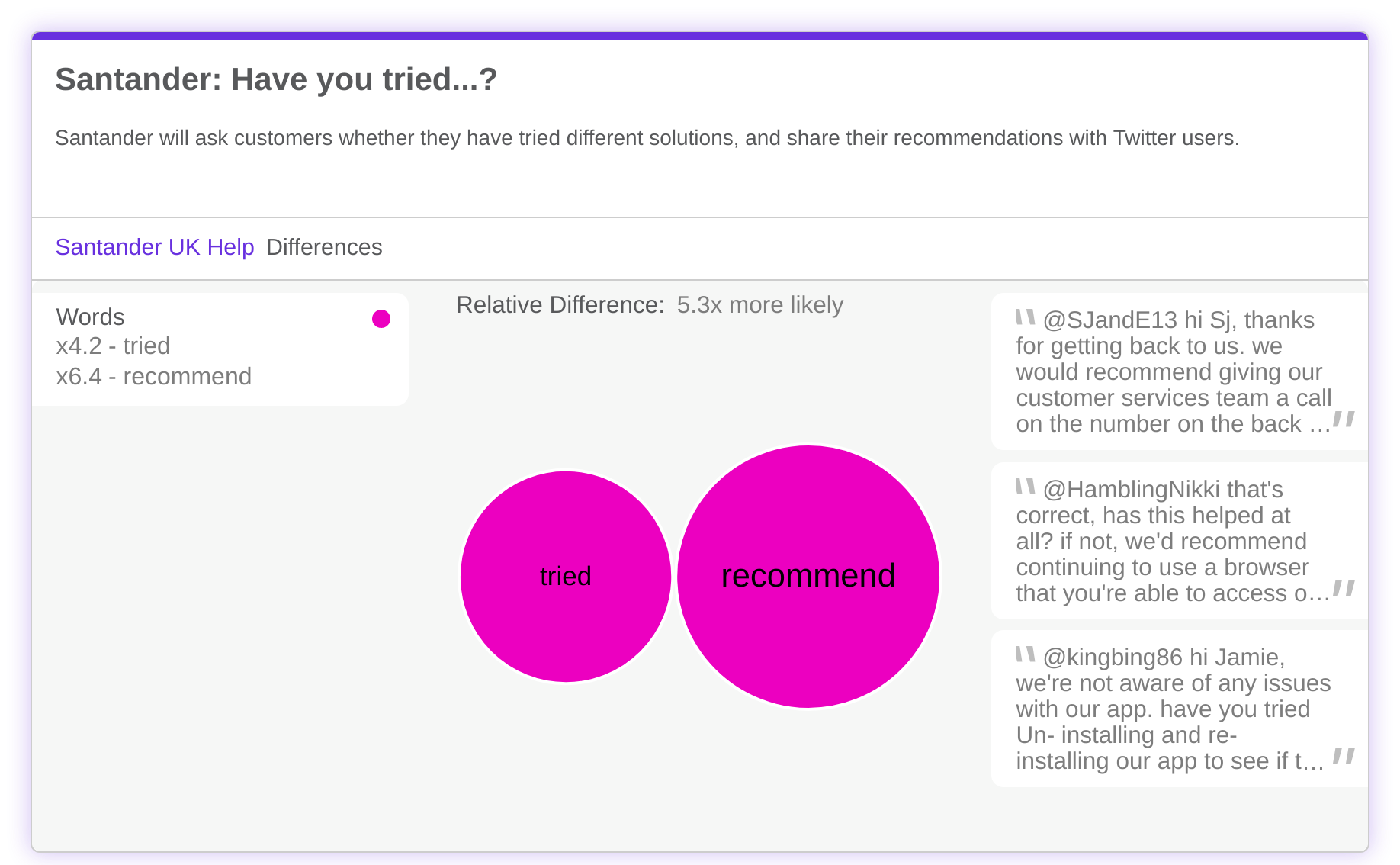

“I’m afraid not”
Linguistically, Santander is straight to the point when it comes to actions that the support team cannot complete. In comparison to other Twitter support channels, Santander is almost 2x more likely to use words with negative implications such as unable, unfortunately, and afraid. Santander might consider reducing the use of these words as they have the potential to create further irritation for the customer and don’t reflect a solution-oriented approach.
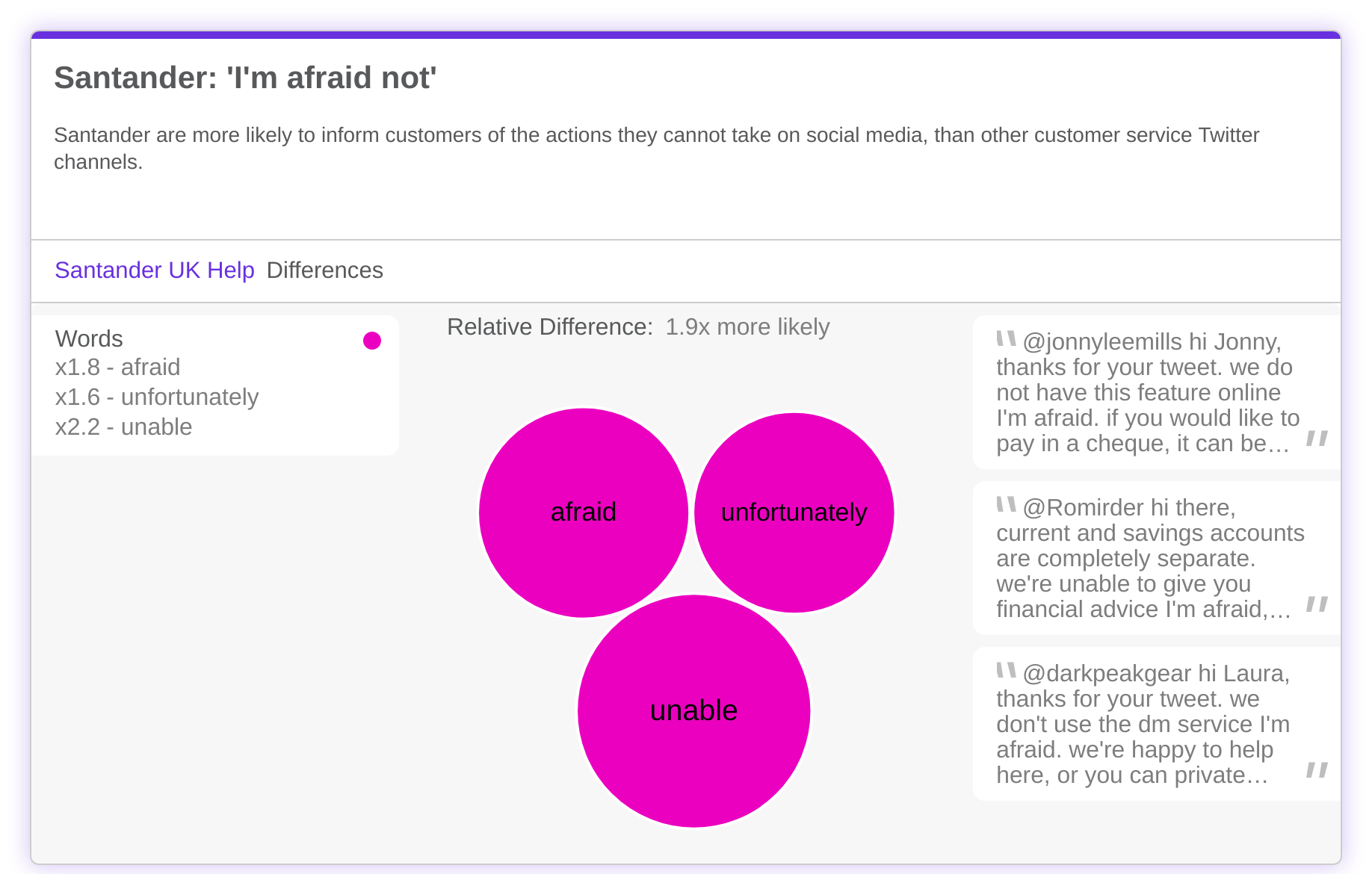

Referring to other channels
Unlike Barclays and NatWest, Santander does not offer a DM service on their Twitter support channel. Instead, they refer customers to their live chat service or an email address where they can exchange more information about specific issues. While email is great for gaining more details than can be shared publicly in a Tweet, the customer experience becomes fragmented when having to hop between different channels to get an issue resolved. If used to its full potential, Twitter can add a new dimension to customer service, reducing wait times, costs and building brand perception.
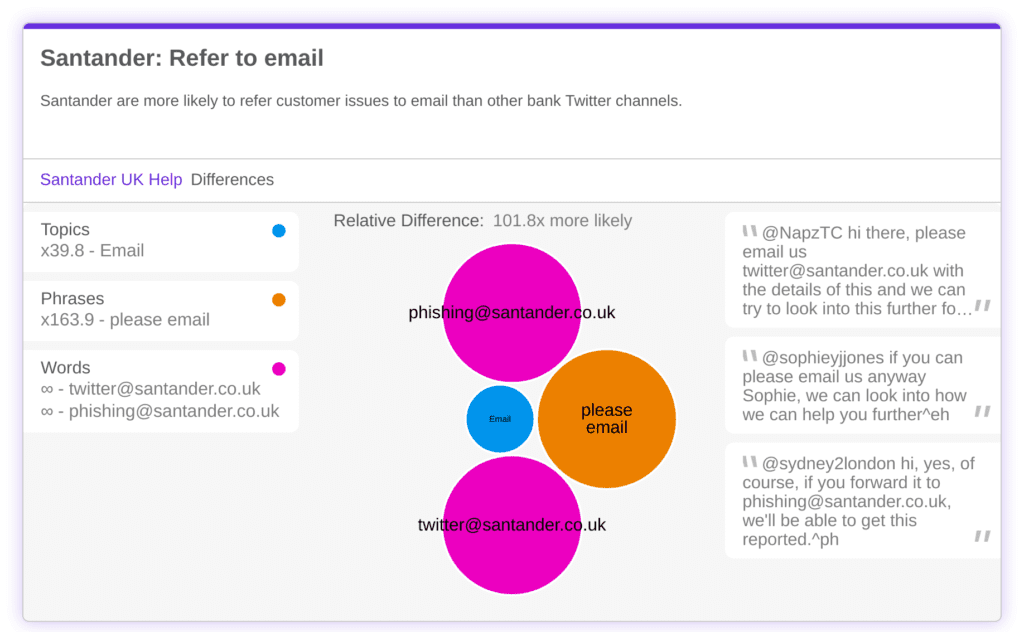



Engaging in cultural movements
In contrast to Santander, NatWest capitalises on the features of social media. As well as using their Twitter support channel as a means of customer service, NatWest can be seen supporting cultural moments and joining trending hashtags 43.9x more than competitors. By addressing environmental concerns and supporting social initiatives such as Black History Month, NatWest connects with their customers on a deeper level.
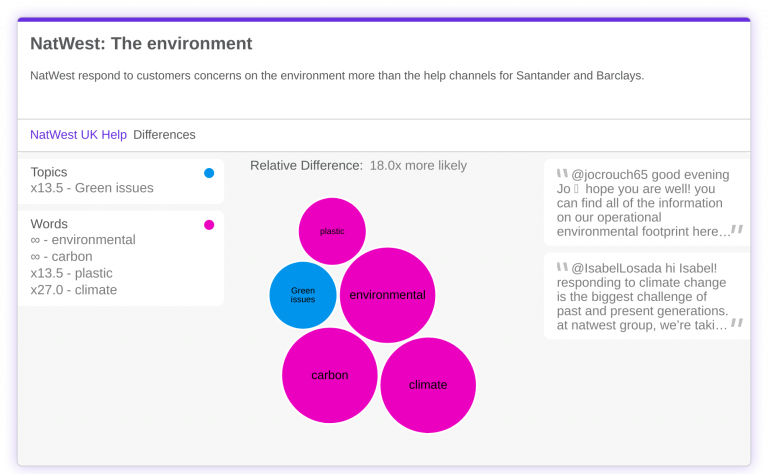

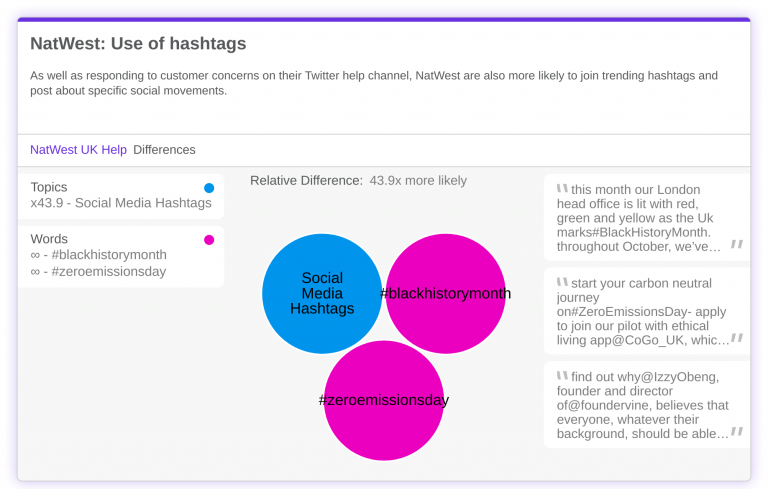

Limitations of social media
Despite understanding the social features of Twitter, NatWest raises attention to the limitations of social-based customer service for their banking customers. Customer service agents admit that they are “limited with how they can help” on social, due to inability to access systems.


Urgency reflected in verbs
The main outcome that people want from customer service is an action that resolves their problem. NatWest reflects this in their language, using present participles such as investigating and fixing. This reassures customers that something is being done. Language that conveys importance is essential in customer service as it can comfort customers who may be acting on emotion.
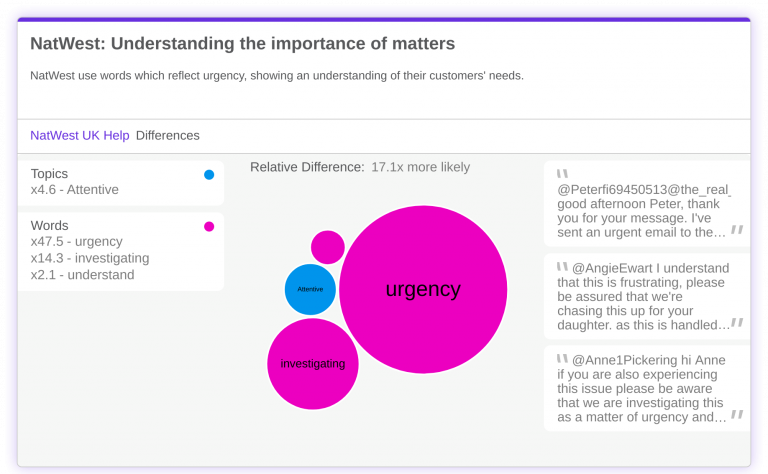

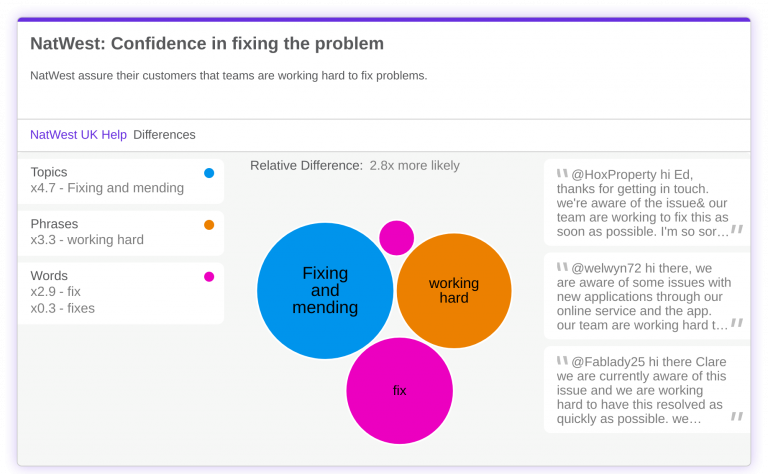

Providing exceptional customer service requires agents to exhibit empathy while remaining concise and friendly. Along with the kind of customer insights analysis explored here, language comparison can ensure companies are striking the right chord with their customers leading to retention, loyalty and positive brand perception.
